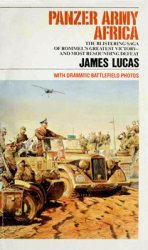Artillery is almost as old as gunpowder, but only in the First World War did it achieve any real precision. In 1914 the French Army had virtually no artillery—its Inspector General admitted that nothing had been done about siege artillery or garrison artillery for forty years. It was a deliberate part of the French Army’s philosophy of attack.
After the Western Front became static, gunners regained the sort of influence that medieval siege warfare had given them. Calibration and survey became more scientific and meteorology was introduced into the calculations. Preliminary bombardments preceded infantry attacks and became more and more complex. Tightly scheduled, they became so precise in aim that the infantry advanced close behind the “creeping barrages.” All this gave artillerymen the right to be consulted about the plans of attack, and they became influential in High Command decisions.
HOWITZER has varied amount of explosive to give low-velocity “plunging fire” at different ranges. Structure is less strong for these weapons, so the weight of the piece is less. Howitzers have carriages permitting high elevation. figure 10
Of slow-loading, horse-drawn guns fired to hit static targets, the - big question of the interwar years was not “How will such artillery manage to deploy and strike against fast-moving armored invaders?” but rather “How will any fast-moving armored invaders survive without fast-moving artillery that can keep up with them and provide them with protection?” Such questions were not expected to be anything but rhetorical. Most military experts thought it self-evident that until a very large number of heavy guns mounted on tracked vehicles (self-propelled artillery) could provide support, no force attempting a blitzkrieg would survive. This serious reservation about the blitzkrieg theories was not only that of the old die-hards; many of the tank theorists held the same point of view.
Guderian was one of the few men who had another answer. Unlike the air forces of other nations, the Luftwaffe had devoted the greater part of its resources to supporting the army. (Germany had no strategic bomber force.) The bomber, Guderian concluded, was to be the blitzkrieg’s artillery.
But the Luftwaffe, in the event, did not provide the constant artillery bombardment which is often credited to it. Its bombers were assigned to the battle according to need, in that same opportunistic way that all the other weapons of blitzkrieg were used. For the immediate needs of battle, the panzer division took their artillery along with them.
All Panzer-Artillerie were howitzers. The howitzer is a relatively low-velocity weapon that throws a missile high into the air so that it “plunges” onto the target. To get the range wanted, the gunner varies the elevation and the propellant charge behind the missile.
Howitzers needed a minimum of time for setting up and could bring a fast rate of fire upon a short-range target. For any given size, the howitzer will have a heavier missile than a high-velocity weapon. Because the lower-velocity missile puts less stress on the mounting, the howitzer is lighter and cheaper to make. It fulfilled all the blitzkrieg requirements.
Each panzer division had three battalions of artillery. The heavy battalion had twelve big 15 cm FH 18 howitzers (three batteries, each with four guns). Lest anyone think howitzers have short barrels, let me add that these had barrels that were 14 feet long. But they could elevate to 45 degrees.
Guns far more quickly than horses did for the infantry divisions.31 Both of them were categorized as Haubitze, which meant that they could be used in high elevation as howitzers and also in lower registers.
The artillery arm was seriously criticized after the Polish fighting. The artillery batteries had not moved forward quickly enough to give continuing support to the attacking infantry. General von Bock, commander of Army Group North, told the artillery men to forget any idea that the infantry must wait for them to move their guns. “The artillery may not delay the infantry,” he wrote in his diary.
More far-reaching was the report from VIII Panzerkorps about the German artillery action against the Polish fortifications at Nikolai. Bunkers and reinforced buildings had proved surprisingly vulnerable to the 8.8 cm antiaircraft gun, which had been reclassified as a dualpurpose gun.




 World History
World History









